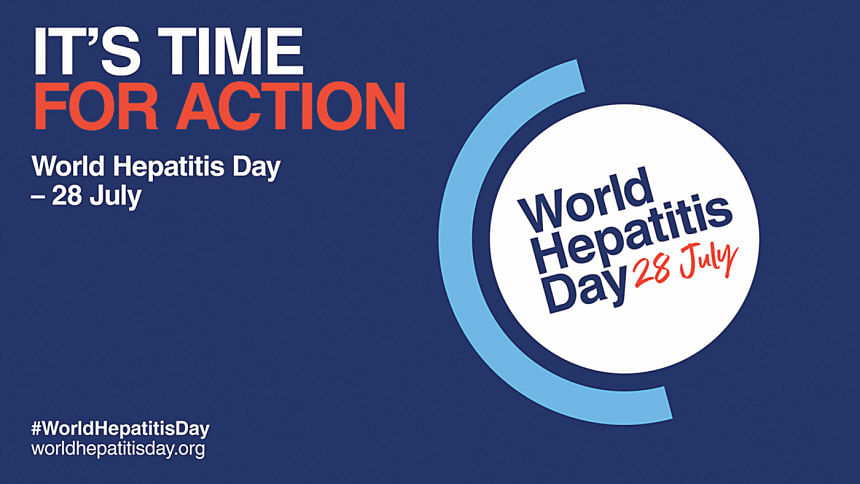It is time for action

World Hepatitis Day, observed on 28 July, raises awareness of viral hepatitis, an inflammation of the liver that causes severe liver disease and cancer. This year's theme is "It is time for action." With a person dying every 30 seconds from a hepatitis-related illness, we must accelerate action on better prevention, diagnosis, and treatment to save lives and improve health outcomes.
There are five main strains of the hepatitis virus: A, B, C, D, and E. Together, hepatitis B and C are the most common infections and result in 1.3 million deaths and 2.2 million new infections per year. Despite better tools for diagnosis and treatment and decreasing product prices, testing and treatment coverage rates have stalled. However, reaching the WHO elimination goal by 2030 should still be achievable if swift action is taken now.
KEY MESSAGES
1. The liver's vital role:
A liver performs over 500 vital functions every single day to keep us alive, which underscores the importance of testing, treating, and preventing viral hepatitis. Hepatitis is an inflammation of the liver, usually caused by a viral infection or non-infectious agents (such as drugs, toxins, or alcohol).
While all hepatitis viruses cause liver disease, they differ in transmission modes, severity of illness, geographical distribution, and prevention methods. Types B and C lead to chronic disease and are the most common causes of liver cirrhosis, liver cancer, and viral-hepatitis-related deaths.
2. Rising deaths:
Deaths from viral hepatitis-related causes are increasing. Combined, hepatitis B and C caused 1.3 million deaths in 2022. Around 304 million people are living with chronic viral hepatitis infection. Every day, 3,500 people die from hepatitis B and C infections, which equates to one death every 30 seconds. Over 6,000 people are newly infected with viral hepatitis each day.
3. Undiagnosed and untreated:
Nearly 220 million people with hepatitis B and nearly 36 million people with hepatitis C are undiagnosed. Most symptoms appear only when the disease is advanced, leading to diagnoses when serious liver disease or cancer has developed. Even after diagnosis, treatment and care coverage is astonishingly low. Of the 304 million people with hepatitis B and C, only 7 million are treated for hepatitis B and 12.5 million are cured of hepatitis C.
4. Prevention and action:
To eliminate hepatitis and achieve WHO's targets by 2030, simplified care services must ensure that all pregnant women with chronic hepatitis B receive treatment and their infants get hepatitis B birth vaccines to prevent infection; 90% of people with hepatitis B and/or C are diagnosed; and 80% of diagnosed people are treated for hepatitis B or cured of hepatitis C. Despite the availability of affordable diagnostic tools and treatments, many people still face out-of-pocket costs, and services are often only available at specialised hospitals.
Key actions include expanding access to testing and diagnostics, strengthening primary care prevention efforts, decentralising hepatitis care to bring it closer to patients, integrating hepatitis care within existing health services, engaging affected communities and civil society, and mobilising new funding avenues to support hepatitis elimination programs.
It is possible to make elimination of hepatitis into a reality. Now is the time to prioritise testing, treatment, and vaccination to meet the 2030 targets.
Source: World Health Organisation

 For all latest news, follow The Daily Star's Google News channel.
For all latest news, follow The Daily Star's Google News channel. 



Comments